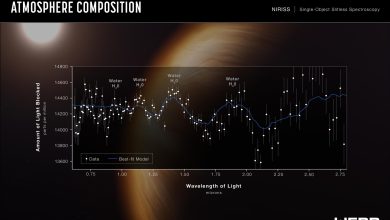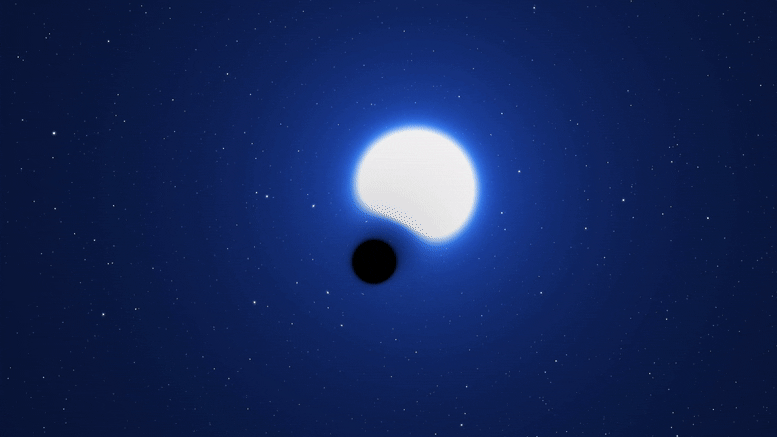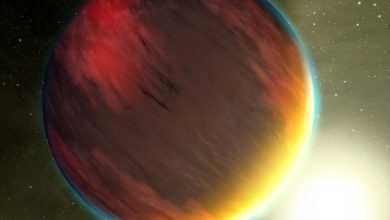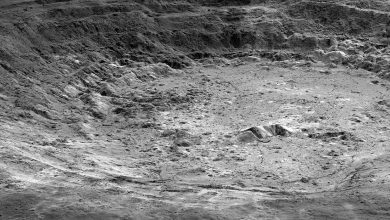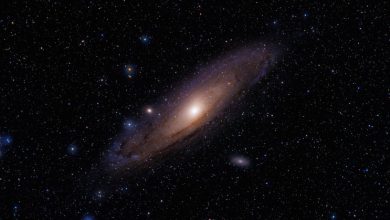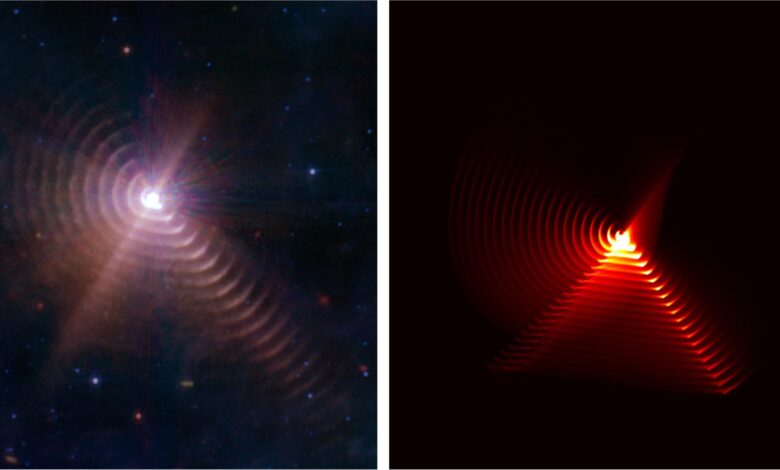
JWST image vs model of WR140. Credit: Left image: NASA/ESA/CSA/STScI/JPL-Caltech. Right image: Yinuo Han/Peter Tuthill/Ryan Lau
A puzzling image captured by the James Webb Telescope explained.
A strange image of the distant star WR140 surrounded by concentric geometric ripples captured by the James Webb Space Telescope (JWST) in July has perplexed astronomers around the world, even sparking frenzied internet speculation that it could be evidence of an alien megastructure light-years across.
The perplexing picture was captured soon after JWST began scientific operations and published its first full batch of images. It rapidly sparked a heated debate on the internet, with some speculating that the enormous ripples were caused by aliens. The picture was described as “bonkers” by Mark McCaughrean, a senior adviser for science and exploration at the European Space Agency and a member of the James Webb Space Telescope Science Working Group.
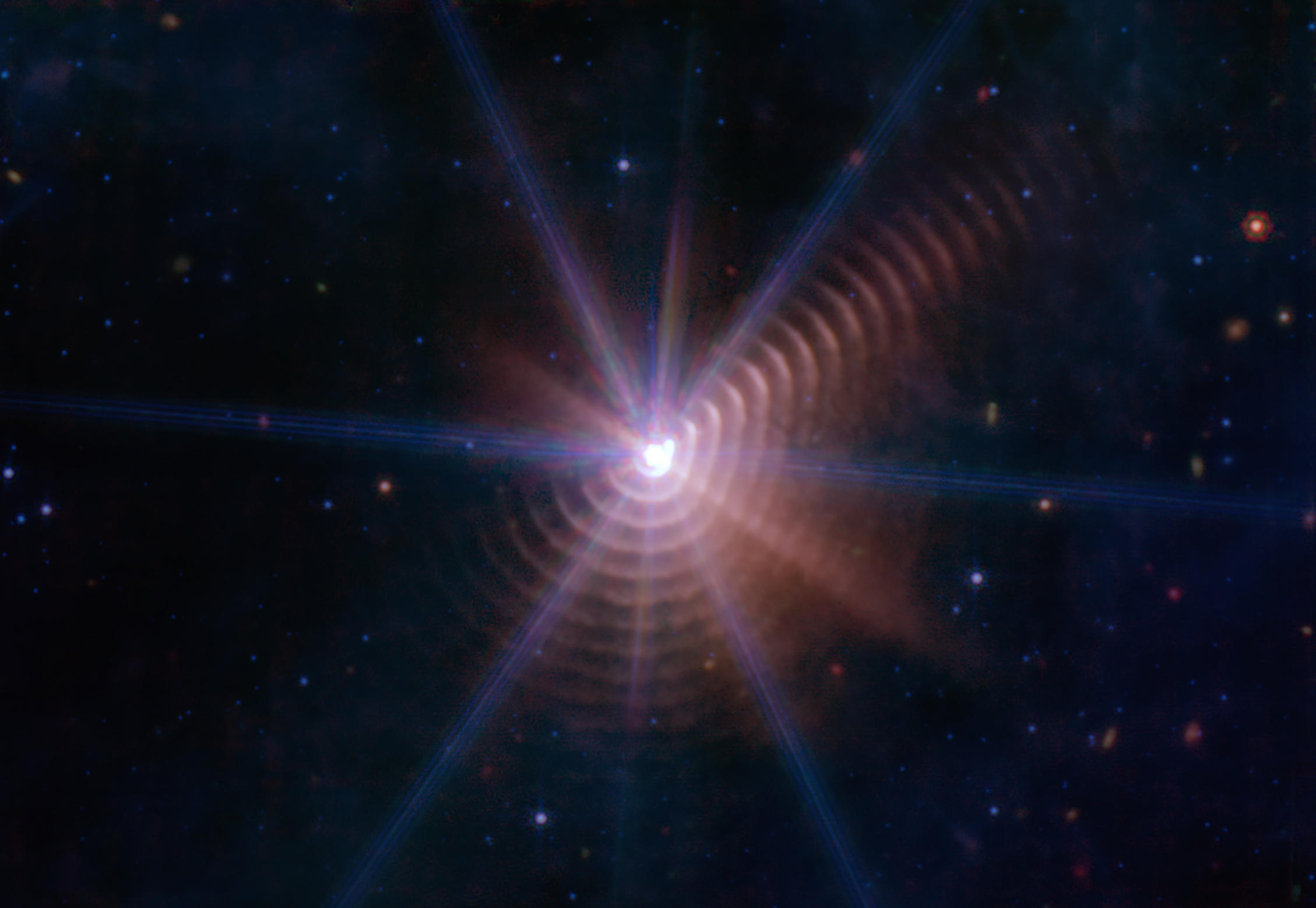
However, two Australian astronomers explain in two companion papers recently published in Nature and Nature Astronomy that the 17 concentric rings seen circling the star are actually a series of mammoth dust shells created by the cyclic interaction of a pair of hot stars, one of which is a dying Wolf-Rayet, locked together in a tight orbit.
“Like clockwork, WR140 puffs out a sculpted smoke ring every eight years, which is then inflated in the stellar wind like a balloon,” said Professor Peter Tuthill from the Sydney Institute for Astronomy at the University of Sydney, a co-author in both papers. “Eight years later, as the binary returns in its orbit, another ring appears, the same as the one before, streaming out into space inside the bubble of the previous one, like a set of giant nested Russian dolls.”
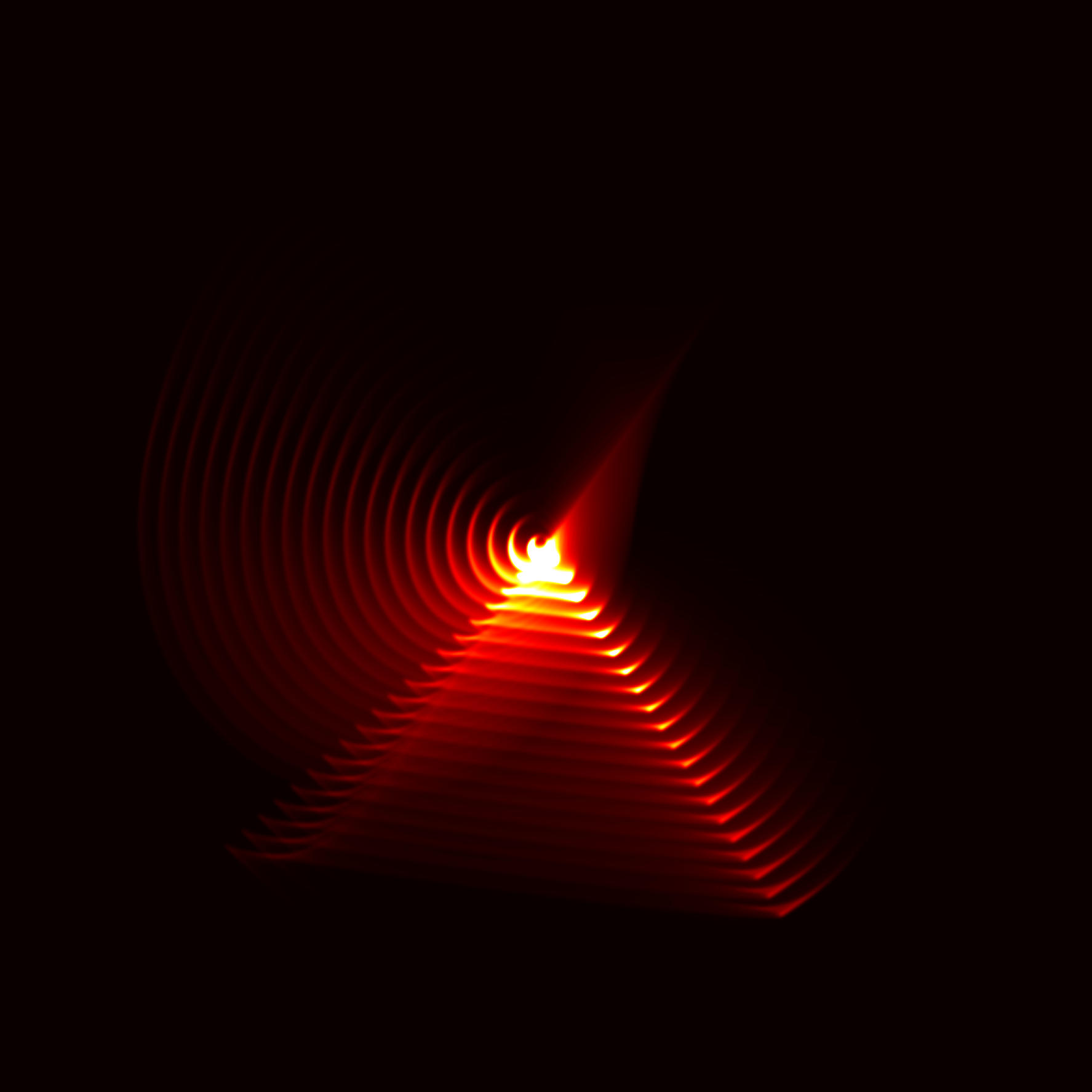
The WR140 pair is made up of a huge Wolf-Rayet star and an even more massive blue supergiant star that are gravitationally bound in an eight-year orbit. While all stars produce stellar winds, those produced by Wolf-Rayet stars are more akin to a stellar hurricane. Elements in the wind, such as carbon, condense as soot, which stays hot enough to glow brightly in the infrared. The dust clouds, like smoke caught by the wind, provide something for telescopes to watch as they follow the flow.
Because the two stars are in elliptical rather than circular orbits, dust production turns on and off as WR140’s binary companion nears and then departs the point of closest approach. Based on data collected with other telescopes since 2006, Professor Tuthill and his former student Yinuo Han – now at the University of Cambridge’s Institute of Astronomy – created a three-dimensional model of the dust plume’s geometry.
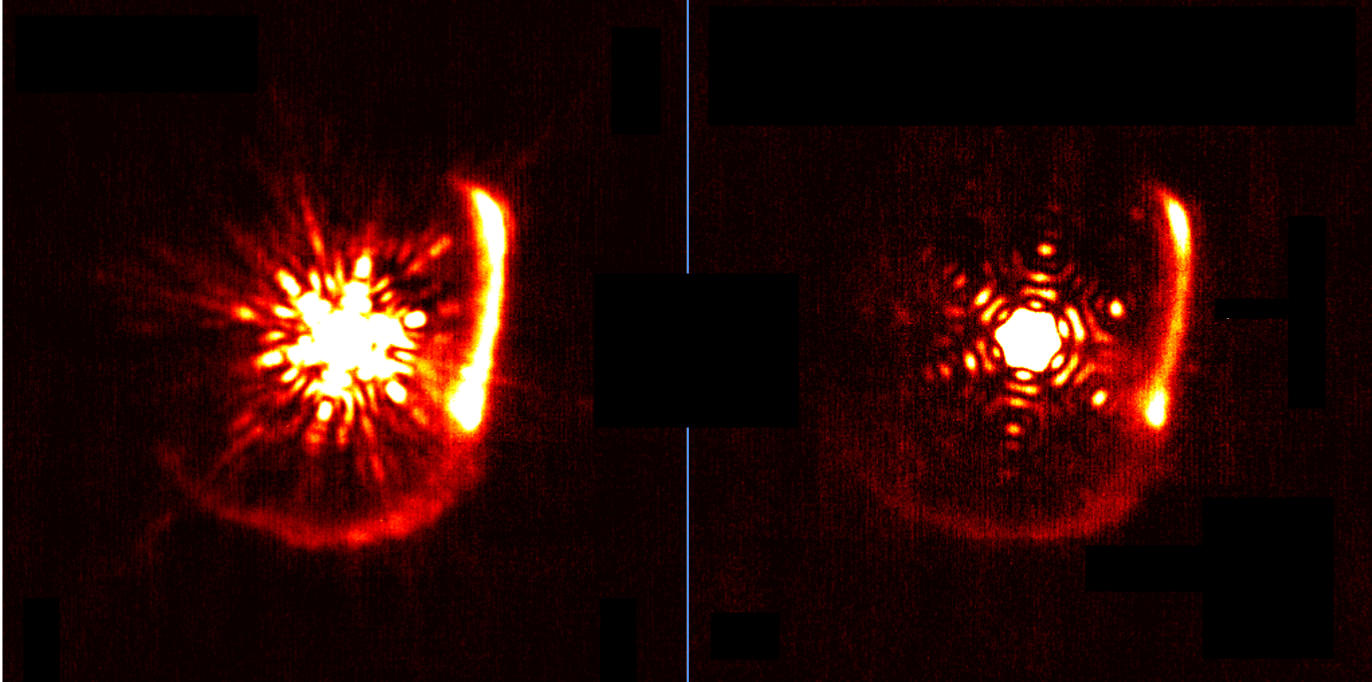
That model, created for the Nature paper of which Han is the lead author, turned out to perfectly explain the bizarre results obtained by the JWST in July. Thanks to this and other contributions, both Han and Professor Tuthill also became co-authors of the Nature Astronomy paper with the new Webb data.
What’s more, in their Nature paper, Han and Professor Tuthill showed – for the first time – direct evidence of intense starlight driving into matter and accelerating it, after tracking titanic plumes of dust generated by the violent interactions between two colossal stars over 16 years.
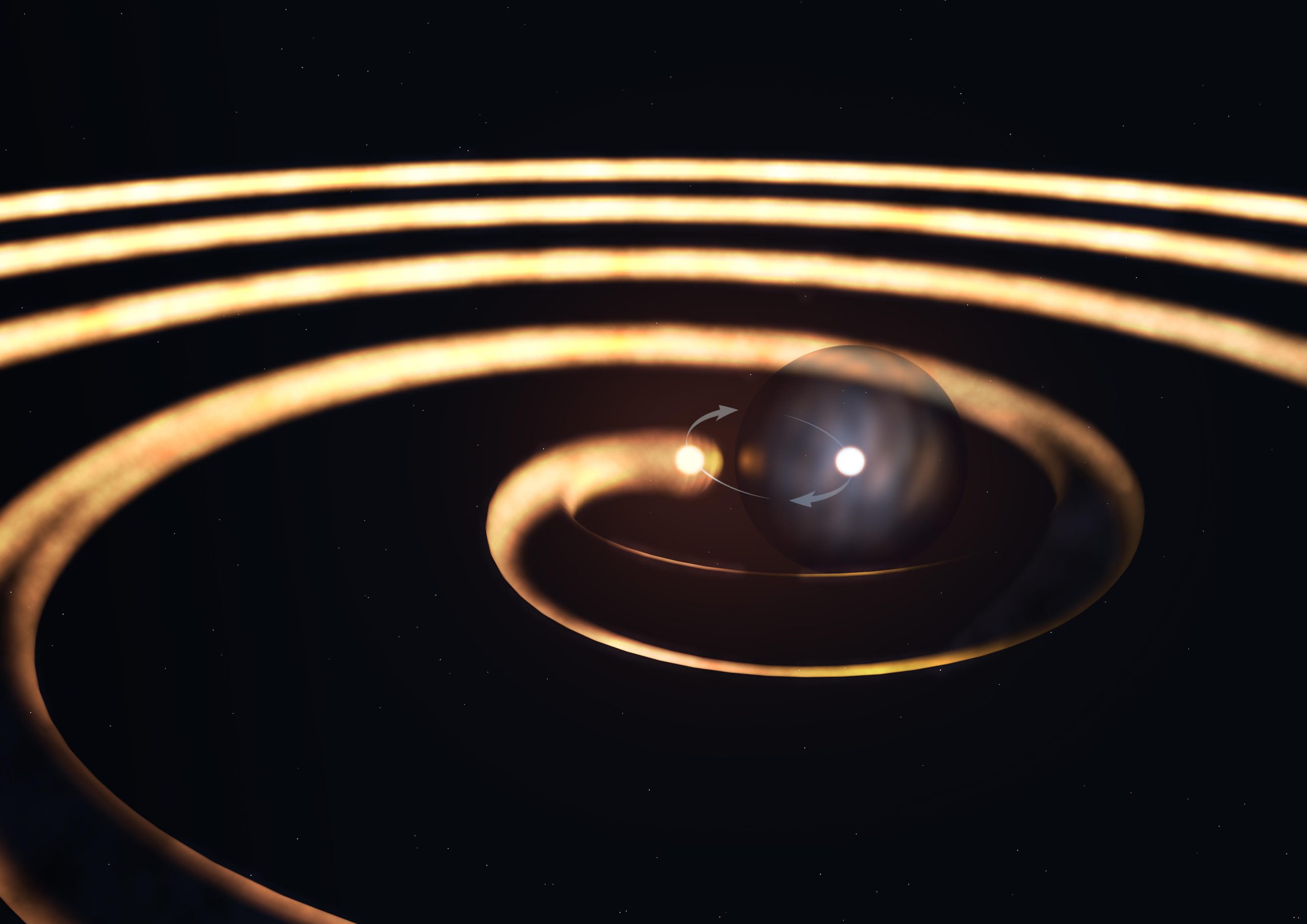
It’s known that starlight carries momentum, exerting a push on matter known as ‘radiation pressure’. Astronomers often see the aftermath of this in the form of matter coasting at high speed around the cosmos, but have never caught the process in the act. Direct observation of acceleration due to forces other than gravity is rarely witnessed, and never in a stellar environment like this.
“It’s hard to see starlight causing acceleration because the force fades with distance, and other forces quickly take over,” said Han. “To witness acceleration at the level that it becomes measurable, the material needs to be reasonably close to the star or the source of the radiation pressure needs to be extra strong. WR140 is a binary star whose ferocious radiation field supercharges these effects, placing them within reach of our high-precision data.”
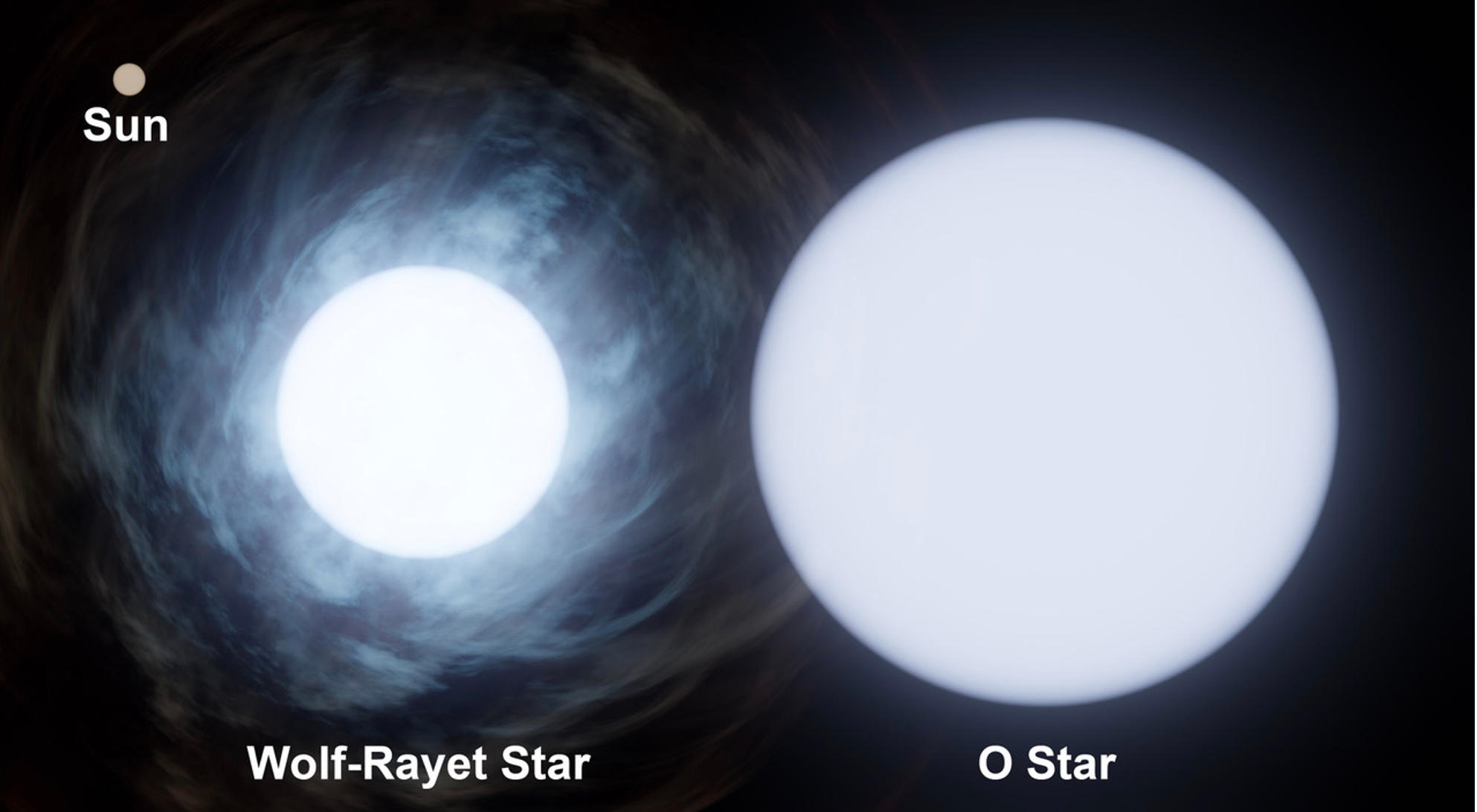
Using imaging technology known as interferometry, which was able to act like a zoom lens for the 10-meter mirror of the Keck telescope in Hawaii, the Australians were able to recover sufficiently sharp images of WR140 for the study.
They discovered that the dust does not stream out from the star with the wind forming a hazy ball, as had been thought. Instead, the dust condenses adjacent to where the winds from the two stars collide, on the surface of a cone-shaped shock front between them. Because the orbiting binary star is in constant motion, the shock front also rotates. The sooty plume gets wrapped into a spiral, in the same way that droplets form a spiral in a garden sprinkler.
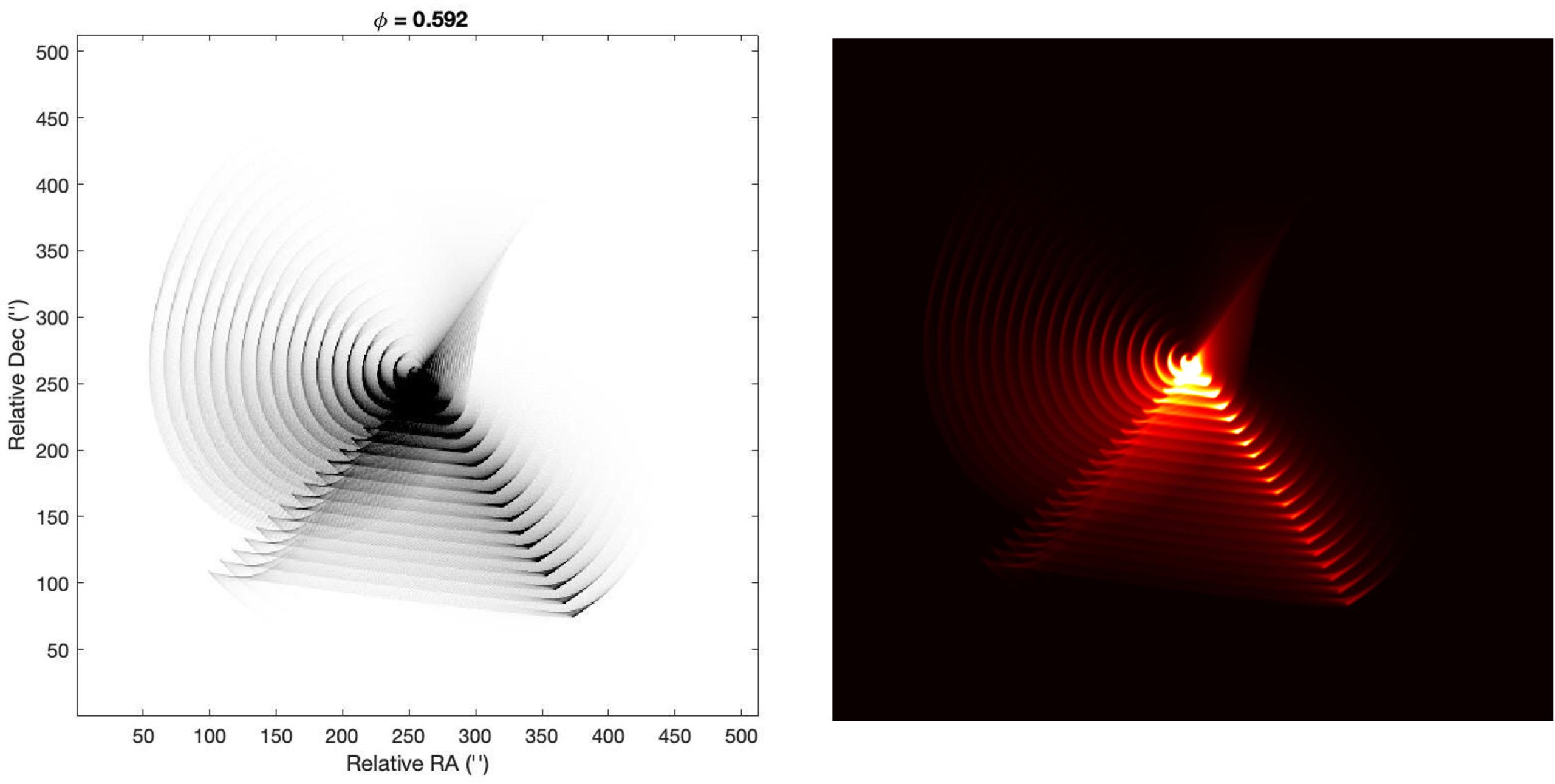
“In the absence of external forces, each dust spiral should expand at a constant speed,” said Han. “We were puzzled at first because we could not get our model to fit the observations until we finally realized that we were seeing something new. The data did not fit because the expansion speed wasn’t constant, but rather that it was accelerating. We’d caught that for the first time on camera.”
Once they added the acceleration of dust by starlight into their three-dimensional model of the WR140 binary, it explained their observational data perfectly. And also ended up explaining the strange concentric rings later spotted with JWST.
This animation looks down from above the orbital plane to depict the spiraling creation of dust in the binary star system WR 140. A Wolf-Rayet star—the dense core of an aging massive star—and an O-type star orbit one another, their stellar winds colliding as they get close. The intermixed stellar material blows back past the O star, forming dust as it cools. Credit: NASA, ESA, and J. Olmsted (STScI)
“In one sense, we always knew this must be the reason for the outflow, but I never dreamed we’d be able to see the physics at work like this,” said Professor Tuthill. “When I look at the data now, I see WR140’s plume unfurling a like giant sail made of dust. When it catches the photon wind streaming from the star, like a yacht catching a gust, it makes a sudden leap forward.”
With JWST now in operation, researchers will be able to learn much more about WR140 and similar systems. “The Webb telescope offers new extremes of stability and sensitivity,” said Dr Ryan Lau, Assistant Astronomer at the U.S. National Optical-Infrared Astronomy Research Laboratory and lead author of the JWST study published in Nature Astronomy. “We’ll now be able to make observations like this much more easily than from the ground, opening a new window into the world of Wolf-Rayet physics.”
Reference: “Radiation-driven acceleration in the expanding WR140 dust shell” by Yinuo Han, Peter G. Tuthill, Ryan M. Lau, and Anthony Soulain, 12 October 2022, Nature.
DOI: 10.1038/s41586-022-05155-5
Reference: “Nested dust shells around the Wolf–Rayet binary WR 140 observed with JWST” by Ryan M. Lau, Matthew J. Hankins, Yinuo Han, Ioannis Argyriou, Michael F. Corcoran, Jan J. Eldridge, Izumi Endo, Ori D. Fox, Macarena Garcia Marin, Theodore R. Gull, Olivia C. Jones, Kenji Hamaguchi, Astrid Lamberts, David R. Law, Thomas Madura, Sergey V. Marchenko, Hideo Matsuhara, Anthony F. J. Moffat, Mark R. Morris, Patrick W. Morris, Takashi Onaka, Michael E. Ressler, Noel D. Richardson, Christopher M. P. Russell, Joel Sanchez-Bermudez, Nathan Smith, Anthony Soulain, Ian R. Stevens, Peter Tuthill, Gerd Weigelt, Peredur M. Williams, and Ryodai Yamaguchi, 12 October 2022, Nature Astronomy.
DOI: 10.1038/s41550-022-01812-x

